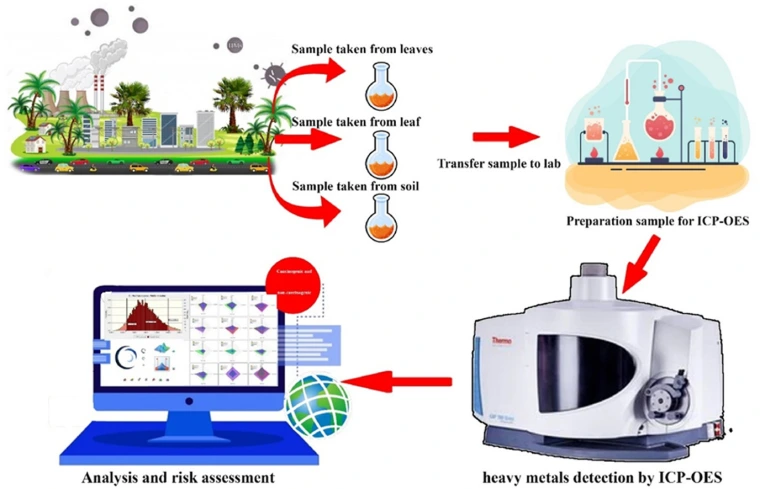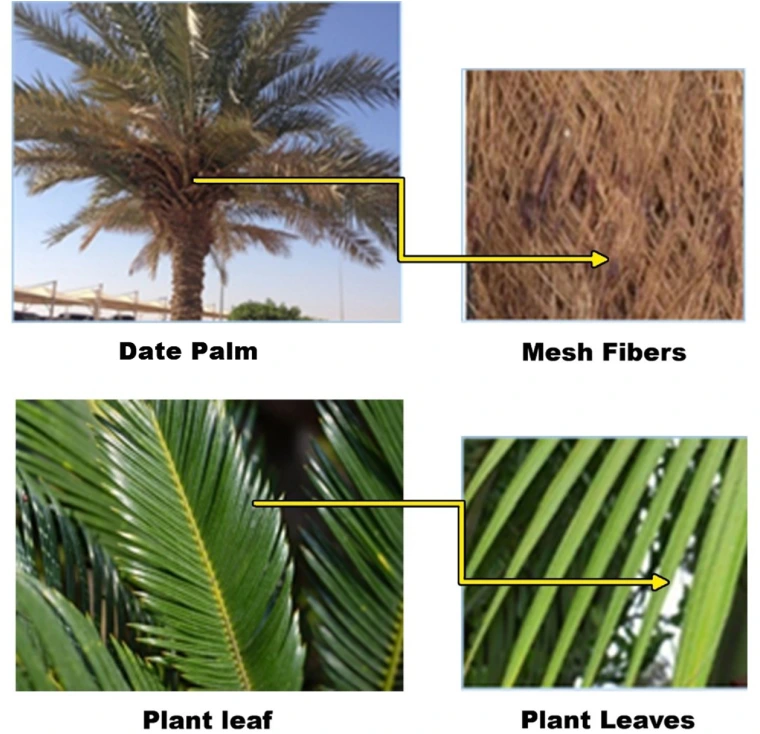SWEHSC researcher monitors air pollution using date palm leaves

Adobe Stock 35913320
Talk about a green thumb! In a recent study involving SWEHSC member Mónica Ramírez-Andreotta, PhD, researchers sampled date palm leaves from Ahvaz city, Iran, to test for potentially toxic elements (PTEs) in the environment. Plants are increasingly being used as bioindicators to detect environmental contaminants like heavy metals. Date palms are becoming a popular candidate because their unique mesh-like structure is well suited for capturing heavy metal deposits.
What were their key findings?
The researchers in this study found that the concentration of PTEs in the air is greater in areas characterized by high industrial and traffic activity. In general, samples taken from the mesh fibers of the date palms contained higher concentrations of PTEs than samples taken from leaves of the same plants, supporting the expectation that date palm mesh fibers could be useful as sensitive PTE bioindicators. Using this method allows researchers to collect many samples at a low cost per sample, making it a promising candidate for future biomonitoring projects even in large cities.

Graphical abstract of article "Using date palm (Phoenix dactylifera L.) as bio-monitors of environmental quality for exposure assessment and pollution source tracking"
Atmospheric Environment Volume 313, 15 November 2023, Article 120055
What is exposure assessment and pollution source tracking?
During exposure assessment and pollution source tracking, scientists use a variety of techniques to identify pollutants, pollutant sources, exposure sites, and populations that could be at risk. Researchers use exposure assessments to estimate how much of a pollutant or contaminant a person is exposed to within a specific time or location.
What are PTEs and why are they important?
Potentially toxic elements, or PTEs, are heavy metals or trace elements that could cause adverse health effects in people who are exposed to them. Examples of PTEs include mercury, lead, arsenic and cadmium. These elements often enter the environment because of industrial activity or traffic emissions. Higher PTE concentrations will be seen in places like big cities, where both industrial and traffic activities are common.
Why monitor PTEs in the environment?
PTEs cannot biodegrade, so they remain in the environment for a long time. They can accumulate in organisms within the food chain, leading to exposure via our food sources. Furthermore, they can be re-suspended into the atmosphere through vehicular or industrial emissions – meaning people who live nearby will continue to be exposed when they breathe the contaminated air. Because they have significant toxic effects on human and animal health, and because they are becoming increasingly common in the environment due to human activity, PTE levels must be monitored routinely.
When researchers can accurately assess exposures, it can lead to more timely and effective mitigation efforts, helping people decrease their exposure to these PTEs and live healthier lives as a result.
How is air quality and pollution monitored?
Air pollution can be monitored with a variety of technical systems and equipment, but these procedures are often expensive and require extensive training. However, a more recent development in air quality assessment is biomonitoring, which involves collecting biological samples from plants that live in the area of interest, then measuring the accumulation of contaminants within the sample. Common bioindicators include fungi, mosses, lichen, tree bark, and tree rings. In this study, researchers used leaves from date palms to measure levels of PTE accumulation.
Why are date palms such good candidates for air quality bioindicators?
Date palms (such as those pictured here) have a unique mesh-like structure that is well-suited for capturing heavy metal deposits from the air. Using date palms as bioindicators is an accessible and relatively inexpensive method of testing air quality, which is critically important for communities and regions that may not have adequate resources or testing equipment.

Schematic of date palm (Phoenix dactylifera L.) and identification of sampling areas.
Atmospheric Environment Volume 313, 15 November 2023, Article 120055
Why was Ahvaz chosen as the sampling location for this study?
Ahvaz is the capital city of the Khuzestan province in Iran. The area is highly industrialized, well-populated, and has great oil and gas resources, large petrochemical and metal industries, and power plants – all of which indicate the concentration of PTEs is likely much higher there than in other cities. Researchers chose this area to conduct testing since it would help them determine if biomonitoring is a viable air quality testing option for big cities with large populations.
To learn more, check out the full research article.
